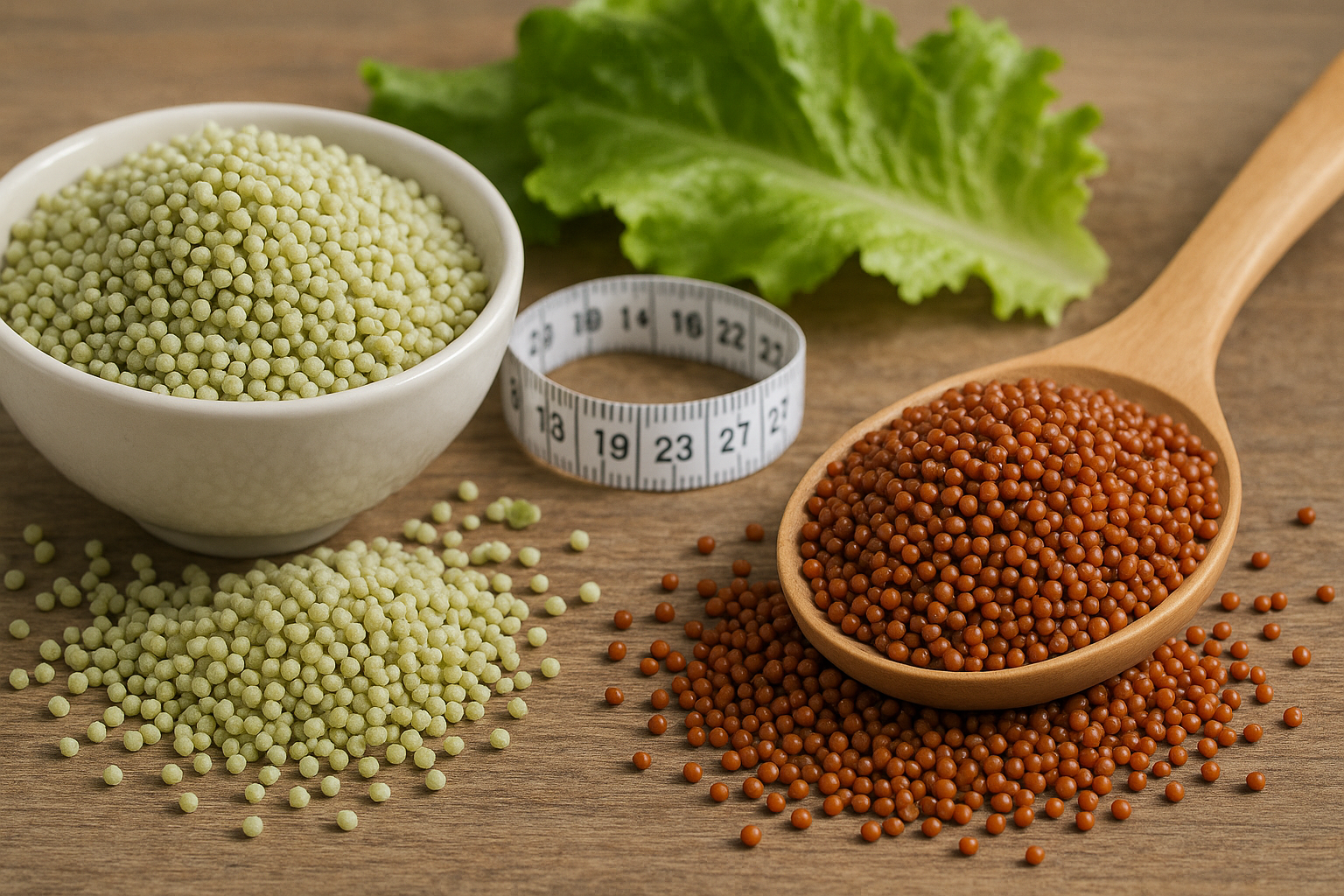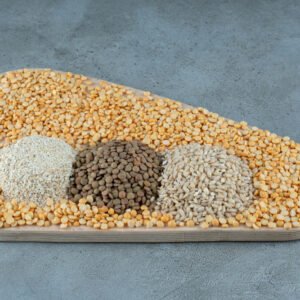When it comes to selecting the right millet for your weight loss journey, understanding the differences between green millet and red millet can make all the difference. These ancient grains have gained popularity among health enthusiasts and nutrition experts for their exceptional benefits in supporting healthy weight management.
What Are Green Millet and Red Millet?
Green millet, commonly known as foxtail millet, gets its name from its greenish hue when fresh. This small-seeded grain belongs to the Setaria genus and has been cultivated for thousands of years across Asia and Africa. Red millet, on the other hand, refers primarily to finger millet (ragi) or certain varieties of pearl millet that display a reddish-brown color.
Both varieties belong to the millet family, which includes over 6,000 species of small-seeded grasses. These nutrient-dense grains serve as staple foods for millions of people worldwide, particularly in regions where traditional cereals struggle to grow.
Green Millet vs Red Millet: Nutritional Breakdown
Let’s break down the nutritional profiles that make these millets valuable for weight loss:
Green Millet Nutritional Profile
Green millet contains approximately 378 calories per 100 grams of raw grain. Here’s what makes it special:
- Protein content: 11-12 grams per 100g
- Fiber: 8.5 grams per 100g
- Complex carbohydrates: 73 grams per 100g
- Fat: 4.2 grams per 100g
- Essential amino acids: Contains all nine essential amino acids
Green millet provides six times more fiber than wheat, making it exceptionally filling and beneficial for digestive health.
Red Millet Nutritional Profile
Red millet, particularly finger millet, offers slightly different nutritional benefits:
- Protein content: 7-8 grams per 100g
- Fiber: 11-15 grams per 100g
- Complex carbohydrates: 65-70 grams per 100g
- Fat: 1.5 grams per 100g
- Calcium content: Significantly higher than green millet
The higher fiber content in red millet makes it particularly effective for weight management and blood sugar control.
How Green Millet vs Red Millet Support Weight Loss
Fiber Content and Satiety
Both green millet and red millet excel in promoting satiety through their high fiber content. Over 95% of dietary fiber in millet is insoluble fiber, which means that millet can improve digestion and help with weight loss. This insoluble fiber helps:
- Increase feelings of fullness
- Reduce overall calorie intake
- Support healthy digestion
- Regulate bowel movements
Blood Sugar Management
After eating 1/3 cup (50 grams) of foxtail millet per day, people experienced a slight reduction in fasting and post-meal blood sugar levels, as well as a decrease in insulin resistance. Stable blood sugar levels prevent sudden hunger spikes that often lead to overeating.
Discover the health benefits of kidney beans and expert cooking tips to make them nutritious and delicious.
Metabolic Benefits
Both millet varieties support weight loss through:
- Thermogenic effect: The body burns more calories digesting high-fiber, complex carbohydrate foods
- Fat absorption reduction: Some millet, such as finger millet (ragi), have been found to reduce the absorption of dietary fat in the body
- Sustained energy: Complex carbohydrates provide steady energy without blood sugar spikes
Green Millet for Weight Loss: Specific Benefits
Green millet offers unique advantages for those focused on weight management:
Complete Protein Profile
Green millet contains all essential amino acids, making it a complete protein source. This characteristic supports:
- Muscle preservation during weight loss
- Better metabolism
- Longer satiety periods
- Healthy tissue repair
Lower Glycemic Impact
Green millet has a moderate glycemic index, helping maintain steady blood sugar levels throughout the day. This stability reduces cravings and supports consistent energy levels.
Versatile Cooking Options
Green millet cooks quickly and adapts well to various recipes, making it easier to incorporate into daily meals without compromising taste or convenience.
Red Millet for Weight Loss: Unique Advantages
Red millet brings its own set of benefits to weight management:
Superior Fiber Content
With up to 15 grams of fiber per 100g, red millet provides exceptional satiety. This higher fiber content means:
- Longer periods between meals
- Better digestive health
- More effective appetite control
- Improved gut microbiome
Calcium and Mineral Density
Red millet contains significantly more calcium and other minerals than green millet. These nutrients support:
- Bone health during weight loss
- Proper muscle function
- Better sleep quality
- Stress management
Natural Detoxification
The high mineral content in red millet supports natural detoxification processes, which can be beneficial during weight loss phases.
Which Millet Should You Choose for Weight Loss?
The choice between green millet vs red millet depends on your specific needs and preferences:
Choose Green Millet If:
- You need complete protein support
- You prefer milder flavors
- You want versatile cooking options
- You have higher protein requirements
Choose Red Millet If:
- You want maximum fiber content
- You need additional calcium
- You prefer nutty, earthy flavors
- You have digestive concerns
Why Not Both? Many nutrition experts recommend alternating between different millet varieties to maximize nutritional benefits. This approach ensures you receive a broader spectrum of nutrients while keeping your meals interesting.
How to Incorporate Millets into Your Weight Loss Diet
Here are practical ways to include both green millet and red millet in your weight management plan:
Meal Preparation Tips
- Breakfast: Replace oats with cooked millet porridge
- Lunch: Use millet as a rice substitute
- Dinner: Add cooked millet to salads and soups
- Snacks: Prepare millet-based energy balls
Portion Control Guidelines
- Daily serving: 1/3 to 1/2 cup of cooked millet
- Frequency: 3-4 times per week
- Timing: Include in main meals rather than as snacks
Cooking Methods
- Pressure cooking: Reduces cooking time and preserves nutrients
- Steaming: Maintains texture and nutritional value
- Roasting: Enhances flavor and digestibility
How CMS Industries Supports Your Healthy Lifestyle Journey
CMS Industries recognizes the growing demand for high-quality, nutritious grains that support healthy living. As a leading agricultural products manufacturer, supplier and exporter in India, CMS Industries specializes in Indian spices, animal feed, pulses, grains, and a wide range of oil seeds.
The company’s commitment to quality ensures that consumers have access to premium millet varieties that retain their nutritional value and natural benefits. Through careful sourcing and processing, CMS Industries maintains the integrity of these ancient grains, making them readily available for health-conscious consumers seeking effective weight management solutions.
CMS Industries’ expertise in agricultural products means they understand the importance of providing clean, unprocessed grains that support various dietary needs. Whether you choose green millet or red millet for your weight loss journey, having access to quality sources makes a significant difference in achieving your health goals.
Getting Started with Your Millet Weight Loss Plan
Begin your millet journey gradually:
- Week 1: Replace one rice meal with millet
- Week 2: Add millet breakfast options
- Week 3: Experiment with different millet recipes
- Week 4: Establish a sustainable millet routine
Remember to drink plenty of water when increasing fiber intake and listen to your body’s responses to different millet varieties.
The debate between green millet vs red millet for weight loss doesn’t have to be an either-or decision. Both varieties offer unique benefits that can support your weight management goals. Green millet provides complete protein and versatility, while red millet delivers superior fiber content and mineral density.
Consider incorporating both varieties into your diet rotation to maximize nutritional benefits and maintain meal variety. Start slowly, pay attention to your body’s responses, and enjoy discovering the many ways these ancient grains can support your health journey.
Ready to start your millet-powered weight loss journey? Connect with CMS Industries to explore their range of high-quality millet varieties and take the first step toward achieving your health goals with these nutrient-dense supergrains.
Frequently Asked Questions
Q1: Can I eat millet every day for weight loss?
Yes, you can include millet in your daily diet. Start with 1/3 cup of cooked millet per day and gradually increase based on your body’s response and dietary needs.
Q2: Which millet is better for beginners – green or red?
Green millet is often better for beginners due to its milder taste and easier digestibility. It also cooks faster and adapts well to various recipes.
Q3: How long does it take to see weight loss results with millet?
Most people notice changes in appetite and energy levels within 1-2 weeks. Significant weight loss results typically become apparent after 4-6 weeks of consistent consumption.
Q4: Are there any side effects of eating too much millet?
Consuming excessive amounts may cause digestive discomfort due to high fiber content. Start gradually and ensure adequate water intake to avoid bloating or constipation.
Q5: Can diabetics safely consume millet for weight loss?
Yes, millets have a moderate glycemic index and can help manage blood sugar levels. However, diabetics should consult their healthcare provider before making significant dietary changes.





